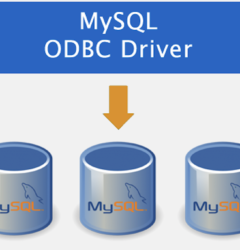01 May

|
Getting your Trinity Audio player ready...
|
In an industry like insurance, where time equals money, the traditional approach to the estimation process proves to be a costly bottleneck for insurers and customers. Even though motor insurance is a market with a valuation of $800 billion, the claims assessment methods used remain stuck in the past, making the process manual, inconsistent, and inefficient.
What if there was a way to generate the repair estimates within seconds instead of days? What if insurers could rescue the costs while simultaneously improving customer satisfaction and retention?
This is when artificial intelligence is introduced, transforming the repair estimation processes, and turning operational headaches into a strategic advantage. By automating damage assessment, eliminating subjective human judgment and integrating real-time pricing data, AI is helping innovating insurers to process claims faster, accurately, and at significantly lower costs.
This transformation can help improve the claims process. Understanding AI’s capabilities has become essential to gaining a competitive advantage for insurance industry executives.
In this blog, we will be examining how AI technologies are solving challenges in the estimation of repair, exploring many practical applications, and also identifying important considerations that should be done by insurers before implementation.
Table of Contents
Understanding Repair Estimation: A Critical Function for Motor Insurers
Vehicle insurance is required in most countries, and this helps to provide important financial protection when the owners face expensive repairs. This Is valuable when damage occurs, as it can escalate to thousands of dollars.
When a policyholder files a claim, processing apt repair estimates is an important function that normally involves two parties:
- A body shop’s repair appraiser who generates the repair cost estimates
- An insurance company’s appraiser determines how much money you can claim for these repairs.
This dual approach creates a framework that has many conflicts and judgments which is subjective. Let’s study how the traditional process creates so many challenges in comparison to AI.
The Challenges of Traditional Repair Estimation
-
Inconsistent Assessment Standards
There are situations where a claim that is filed by a customer matches the estimate of the repair shop. So, multiple times there are insurers that try to cut costs or find alternatives.
It is clear from this negotiating process that we can derive that the problem centres around the fact that the estimates for repairs and claims require a lot of manual work and are therefore prone to human error.
This subjective assessment can create challenges for the customers as it can show inconsistencies between different appraisers who are examining the same damage. This leads to conflicts between the policyholder and the insurer which can then hinder the customer relationship and potentially increase the resolution timelines.

-
Actual cash value
Most people find the value of the car much higher than what the owners intend to sell it for and is perceivably very different from what the insurers have to offer for it, which is much lower. This happens due to ACV, which is the actual value of the vehicle along with taking in consideration the depreciation.
This gap causes the customers to seek a payout that is much higher than the generated estimate, while the owner expects to receive so much more than offered. In the long run, this can make relationships complicated, and extended processing becomes the new norm.
-
Delays in inter-company
There are a lot of customers and insurers during the claims process. Insurers often represent many parties at once and this can also cause intercompany disputes which will then increase the procedure timeline.
These processes can leave the vehicle owners in a situation where they have to wait for extended periods without a clear resolution timeline. This creates a lot of uncertainty for the customers and creates a poor experience while also increasing the administrative overhead for the insurers who are managing the communication.
All these factors combine and conclude that the traditional repair estimation makes an unnecessarily prolonged and cumbersome experience for the customers while also driving up the operational costs for insurers. But now, AI technologies are providing solutions to these challenges with great ease.
AI repair estimation systems
Because of automation, AI has now increased its accuracy, making it easier to estimate the cost of repairs. This helps to show us the efficiency of AI applications in vehicles regarding estimation.

-
Damage assessment and report generation
An executor has to be present for the vehicle assessors in order for them to document all the critical steps in the evaluation. The lack of human oversight along with subjectivity leads to empirical bias, inconsistency, lack of attention to detail, and override judgment shaped by perception.
Through training on millions of damage examples, AI systems have been shown to outperform human assessors in the identification of vehicle damage. In addition, AI can standard format reporting regarding:
- The location of damage and the severity
- The individual parts that are affected
- Guidelines on what repair and replacement issues need to be addressed
- Current market data relevant to costing
Insurers have the option to automate processes and eliminate human bias at remarkable speed.
-
Market data integration
Unlike human adjusters who reference the limited pricing resources, Ai systems can get access to databases containing:
- Original equipment manufacturer
- Alternative for aftermarket parts
- The current rates of labour according to region
- Historical data for similar damage and vehicles.
This data integration gives an advantage to the insurers to generate more accurate estimates by connecting the customers with the appropriate repair networks and also establishing fair repair and replacements, whenever needed. This helps in concluding the claims process in a faster and more efficient way.
-
Straight-Through Processing
Straight-Through Processing (STP) represents the most important AI applications in claims processing. AI helps to solve the claims and also recommends repair with the least human intervention.
With STP, the vehicle owners can simply just submit the damage photos through a mobile app and they can receive the repair estimates within a couple of minutes, directly on their devices.
Companies like Inspketlabs offer these type of services and this process helps in:
- Reducing the errors that occurred while processing
- Improvement in the estimation consistency
- Accelerating the claims settlements
- Frees up the human input in cases which are complex
- Creates a powerful and seamless customer experience
This combination of AI applications creates a process that helps the repair estimation to be less difficult and frustrating, faster and less vulnerable to subjectivity and fraud. They focus on addressing the core challenges of traditional methods.
Limitations of AI-based estimation
AI has many disadvantages, but there are some limitations, too:
- Internal vs external damage: AI helps to analyze external damage, but it cannot catch the internal mechanical issues that need human expertise.
- Historic damage context: With a lack of proper training, the AI systems often cannot distinguish between new and pre-existing damage, which can lead to potentially exaggerated claim reports.
- Insufficiency in data training: AI models that have inadequate training datasets can often produce the results of these assessments which are false and misleading, which can cause more problems than it solves.
- Vulnerability to manipulation: without proper safeguards, the users can attempt to trick the system by switching vehicles during the assessment process which can further confuse the AI.
While there are some disadvantages of AI, there are many companies that are working on the solution to overcome these challenges.
The future of AI solutions
The traditional systems and processes have proved to be a manual, frustrating and elongated process. AI technologies have had this transformation that has helped insurers to address these challenges and reduced processing times, improved accuracy and created a better customer experience.
With AI implementation, even though it has some limitations, innovative companies continue to develop solutions for these processes and overcome these limitations. For insurers who are seeking operational excellence, these solutions represent a strategic opportunity to gain a competitive advantage.


